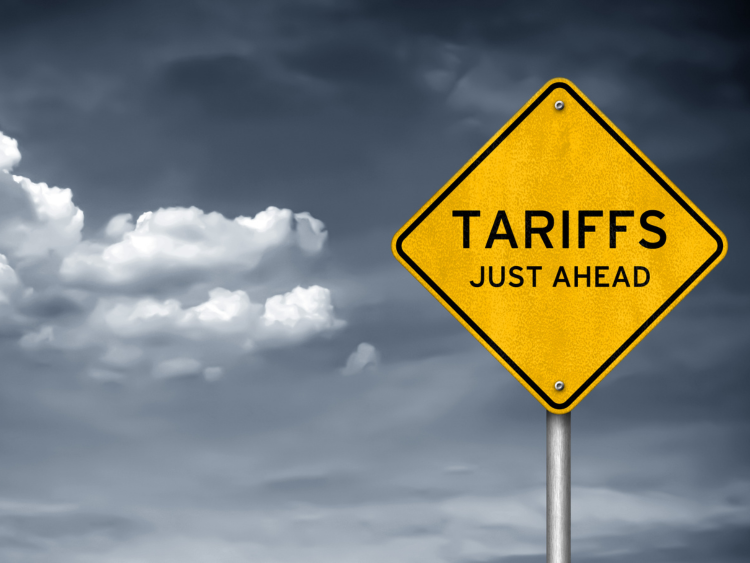Government/Policy

November 15, 2020
Leibowitz: Currency Manipulation—A New Tool for Protection of Domestic Industries?
Written by Lewis Leibowitz
Trade attorney and Steel Market Update contributor Lewis Leibowitz offers the following update on events in Washington:
Exchange rates make international transactions possible. If a trading partner (let’s call them Country X) could keep its exchange rate abnormally low against the U.S. dollar, its exports to the U.S. would be more competitive and sales would increase. At the same time, imports from the U.S. to Country X would be more expensive, potentially increasing domestic sales of Country X’s factories. Let’s suppose the Country X=Vietnam.
While everyone was watching the election, the Trump administration released a preliminary countervailing duty (subsidy) determination on tires from Vietnam. It was the first determination under new rules on exchange rate manipulation issued last spring by the Commerce Department, which handles countervailing duty cases. Commerce found that Vietnam kept its currency, the dong, undervalued against the U.S. dollar by 4.75 percent.
Also in 2020, the U.S. Trade Representative initiated an investigation under Section 301 of Vietnamese currency undervaluation. This proceeding attracted dozens of comments from business, organized labor and think tanks. The comment deadline expired last week.
The fuss over currency manipulation dates back a long way. In the 1980s, U.S. interest groups, led by Big Steel, sought to paint European and Japanese steel exporters as benefiting from government support of their production. Big Steel commissioned a book about these subsidies, “Steel and the State.” Among the alleged subsidies, a new theory was advanced: If governments kept their currencies low against the U.S. dollar, that exchange rate manipulation would subsidize foreign production, and countervailing duties could be levied, protecting the U.S. industry. Downstream industries vigorously opposed this idea because it would increase their costs. There arose a series of studies and position papers arguing for and against the idea of imposing tariffs to counteract alleged currency manipulation.
There is no question that exchange rate fluctuations can affect trade flows dramatically. Until the early 1970s, most countries established fixed exchange rates. Changes in those rates were rare and impacted national economies in major ways. In 1967, the Britain devalued the pound against the dollar from $2.80 to $2.40, a 14 percent cut in value. Shortly after the 1967 devaluation, governments around the world determined that they lacked the resources to maintain fixed exchange rates any longer. In 1971, the United States broke the link between the value of the dollar and the price of gold ($35.00 per ounce) and allowed the dollar to “float” against other currencies. Other countries quickly followed suit. By 1973, most major currencies floated, and they still do. Instead of wrenching shocks of devaluation such as the British pound, each day rates changed based on supply and demand. As international trade increased, private currency transactions dwarfed efforts by government to support exchange rates.
In the 1980s, the U.S. dollar began to strengthen against major foreign currencies, increasing the U.S. trade deficit by increasing the cost of U.S. exports abroad and decreasing the cost of imports in the United States. In 1985, the U.S. convened a conference at the Plaza Hotel in New York to arrange an international agreement (the Plaza Accord) to reduce the value of the dollar in relation to foreign currencies—in other words, the U.S. sought international help to manipulate its currency. The accord worked for a few years, but inevitably trade flows changed and currency traders set the exchange rates.
As trade with China increased, debate shifted to the exchange rate between the U.S. dollar and the Chinese yuan (and other “nonmarket economies”). That debate continues. Beginning in 1988, Congress required the Treasury Department to announce twice a year whether foreign governments were manipulating their currencies.
However, the definition of “manipulation” is frustratingly imprecise, which led to political pressure overcoming actual analysis and politicizing the semiannual finding. By 2019, the Trump administration, as part of its China trade war, designated China a currency manipulator, which was predictably greeted warmly and criticized by different segments of the economy. In an age where currency markets are so large that governments cannot directly affect supply and demand for their currencies, manipulation is a very subjective concept and measuring its impact on actual exchange rates is nearly impossible.
Vietnam entered this currency fray in early 2020. The Vietnamese dong depreciated significantly in value against the dollar in the spring of 2019 and again in early 2020—but the fluctuations were not great—about 1 percent in 2019 and 2 percent in 2020. After significant tariffs on imports from China were levied by the Trump administration, businesses began to exit China and look for other supply sources. Vietnam benefited from this search for other supply sources. As a result, the U.S. trade deficit with Vietnam sharply increased; the exchange rate fluctuations were at best a minor factor in the trade deficit.
However, the Trump administration responded by initiating a Section 301 inquiry in October on the degree to which Vietnam manipulates its currency to reduce its value in relation to the dollar and by investigating Vietnamese currency manipulation in a countervailing duty case involving imports of tires from Vietnam. The comment deadline expired last week. The usual pro-tariff suspects argued in the Section 301 investigation that Vietnam manipulated its currency and urged the administration to levy tariffs on Vietnamese imports. The U.S. Trade Representative could decide to impose tariffs at any time.
In the meantime, the Commerce Department issued a preliminary finding that the dong was kept low against the dollar by Vietnamese government actions. The preliminary determination found that currency manipulation affected subsidies by about 1 percent.
The Section 301 and countervailing duty actions, plus the existing requirement of a semiannual finding by Treasury about currency manipulation, put exchange rates in the middle of the tariff and trade battle. It is only a matter of time before China is also embroiled in this controversy.
Will this new front in the tariff wars help manufacturing and jobs in the United States? That question is and will continue to be front and center. If your company competes against imports, it may see its interest in restricting imports to the United States. Steel producers would like higher tariffs on steel products; tire companies would like higher tariffs on tires, and so forth. Auto producers, on the other hand, are not very concerned about Vietnamese cars—but they do benefit from globally competitive markets in the United States for steel and tires. If those products cost more, their cars and trucks will be less competitive, putting their manufacturing jobs in jeopardy.
Tariffs on imports benefitting from “artificially” low exchange rates against the dollar will fall on consumers of products from those countries, and on U.S. manufacturers who buy those products as production inputs. As the list of “currency manipulators” grows, the damage will grow. By keeping exchange rates low, foreign governments (and our own government) damage their economies by raising prices in their home markets. No country can make everything for itself—not Vietnam, not even the United States.
The level of tariffs from keeping exchange rates artificially low will likely not be great. The countervailing duty resulting from exchange rate manipulation added about 1 percent to the subsidy rates—not likely to make much of a dent in imports of tires by itself. But the dispute over these new duties can bleed into other areas, and potentially hurt U.S. exports if other countries retaliate.
The new administration will have its hands full sorting out these issues. Currency will be a focus of debate, in part because its meaning is so unclear.
The Law Office of Lewis E. Leibowitz
1400 16th Street, N.W.
Suite 350
Washington, D.C. 20036
Phone: (202) 776-1142
Fax: (202) 861-2924
Cell: (202) 250-1551






